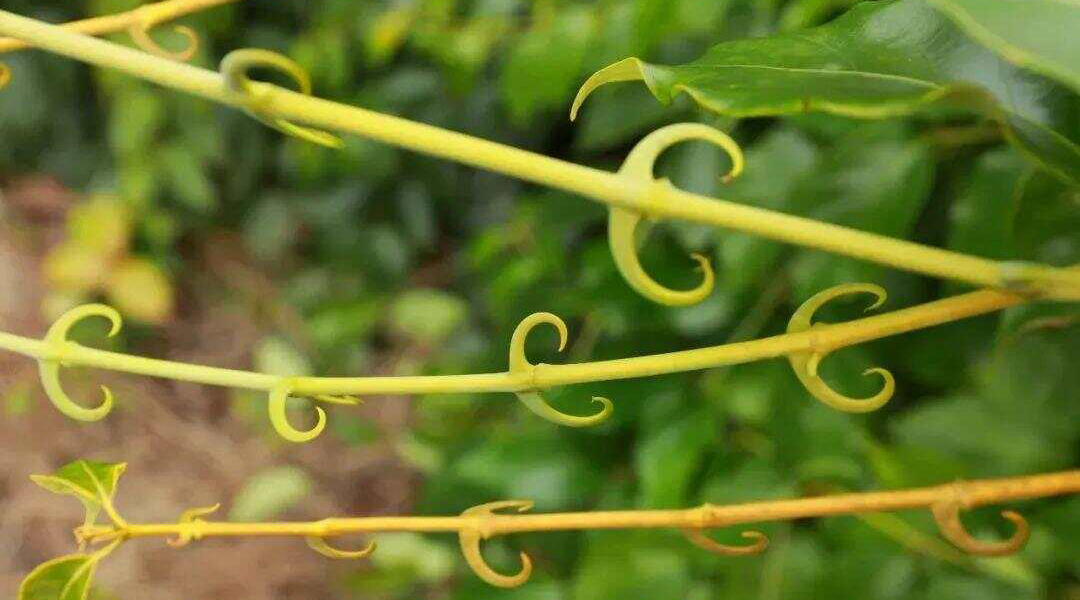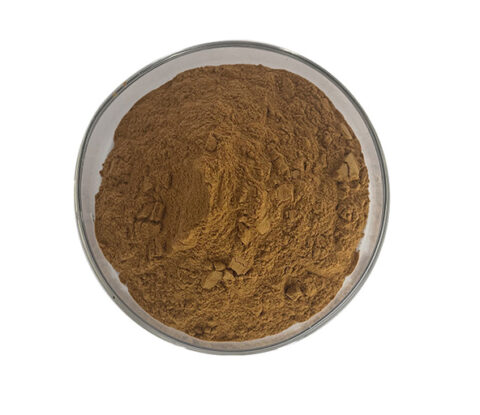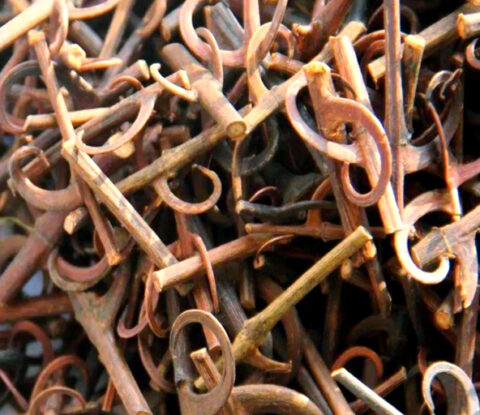
Uncaria (Gou Teng) Extract Powder 10:1, 20:1, 50:1 TLC
The functions of Coix seed in traditional Chinese medicine include promoting diuresis and dampness, strengthening the spleen and stopping diarrhea, removing rheumatism, expelling pus, detoxifying and dispersing nodules. Used for edema, athlete's foot, poor urination, spleen deficiency diarrhea, damp stagnation, lung abscess, intestinal abscess, and verruca.
Uncaria (Gou Teng) Extract Powder 10:1, 20:1, 50:1 TLC
【Other names】: Gou Teng, Uncaria Rhynchophylla, Gambir Plant, Ramulus Uncariae cum Uncis
【Botanical source】: Uncaria rhynchophylla(Miq.)Miq. ex Havil, Uncaria macrophylla Wall, Uncaria hirsuta Havil, Uncaria sinensis(Oliv.)Havil or Uncaria sessilifructus Roxb.
【Part used】: Dry hooked stems and branches of Uncaria rhynchhophylla (Miq.) Miq. ex Havil, Uncaria macrophylla Wall, Uncaria hirsuta Havil, Uncaria sinensis (Oliv.) Havil or Uncaria sessilifructus Roxb, a branch of the family Rubiaceae. Harvesting in autumn and winter, removing leaves, cutting into sections, and drying in the sun.
【Specification】: 10:1, 20:1, 50:1 TLC
【Appearance】: Brownish yellow fine powder
【Particle size】: 95% pass 80 mesh size
Uncaria (Gou Teng) Extract Powder Production Flowchart
Uncaria (Gou Teng) raw materials – natural air drying–Coarse powder(40 mesh) -Low temperature water extraction – 1st Reflux Extraction(10 times water,2 Hrs) – 2nd Reflux Extraction8 times water,1.5 Hrs) – 3rd Reflux Extraction(6 times water,1 Hrs) – Extraction Solution-combine&Filtrate-Concentrate-Extractum-spray drying – screening – packaging – detection of physical and chemical indicators – warehousing

Specification Sheet of Uncaria (Gou Teng) Extract Powder
| Product name: | Gou Teng Extract | ||
| Specification: | 10:1 TLC | ||
| Part used: | Dried roots of Uncaria rhynchophylla | ||
| Solvent used: | Hot water | ||
| Process: | Raw materials crushed, extracted, concentrated and spray-dried to powder | ||
| Non GMO according to regulation (EC) 1829/2003 and 1830/2003 or United States requirements. Non allergen according to Directive 2007/68 amending Annex IIIa to Directive 2000/13/EC and US Food allergen labelling and consumer protection act 2004. | |||
| Heavy Metals: | |||
| Lead: | NMT 3ppm | Cadmium: | NMT 1ppm |
| Arsenic: | NMT 2ppm | Mercury: | NMT 1ppm |
| Residual solvents: | Comply to USP | ||
| Pesticides residues: | Conform to Regulation USP<561> | ||
| Microbiology: | |||
| Total plate count: | 10000cfu/g Max | Yeasts and molds: | 1000cfu/g Max |
| E.coli: | Not detected in (g)10 | Salmonella spp.: | Not detected in (g)25 |
| Staphylococcus aureus: | Not detected in (g)10 | Clostridium spp.: | Not Present in 0.1 g of food |
| Organoleptic quality | Method | Specifications | |
| Aspect: | Visual : ( CQ-MO-148) | Powder | |
| Color: | Visual : ( CQ-MO-148) | Brownish | |
| Flavor: | Sensory: (CQ-MO-148) | Characteristic | |
| Analytical quality | Method | Specifications | |
| Identification: | TLC | Conform | |
| Loss on drying: | USP <731> | < 10% | |
| Bulk density: | USP <616> Method I | 40 – 60 g/100mL | |
| Particle size: | Analytical sieving || USP <786> | 100% through 80meshes | |
| Packaging suitable for foodstuff. | |||
Extended Reading
Uncaria (Gou Teng) Function and Efficacy Recorded in TCM
Gou Teng is a very important and commonly used medicine in traditional Chinese medicine for calming the liver and relieving wind. Its medicinal properties are slightly cold, its taste is sweet, and it belongs to the liver and pericardium meridians. Its core efficacy revolves around the “liver”, especially in diseases related to “liver wind”.
The following are the detailed roles, applications, and characteristics of Gou Teng in traditional Chinese medicine theory:
1. Clearing heat and calming the liver
This is the most basic and important function of hooked vine.
Mechanism of action: Gou Teng has a cold nature and can clear liver heat; It is light in weight and good at walking up to the head of Jiao, calming the liver yang that is high.
Main applications:
Liver fire inflammation: manifested as headache, dizziness, red and swollen eyes, bitter mouth, irritability and irritability.
Hyperactivity of liver yang: commonly seen in patients with hypertension, manifested as dizziness, headache, head heaviness, red face and eyes, tinnitus, etc. Often combined with Tianma, Shixianming, Gardenia, etc., such as Tianma Gouteng Drink.
2. Relieve wind and spasm
This is another key function of Gou Teng, especially suitable for convulsions and spasms related to “liver wind”.
Mechanism of action: Traditional Chinese medicine believes that “all winds that cause dizziness belong to the liver”. Internal movement of liver wind can cause muscle spasms, tremors, and even spasms. Gou Teng can clear liver heat and calm liver yang, thus playing a role in calming liver wind.
Main applications:
Heat induced wind: seen in convulsions and spasms caused by persistent high fever, especially common in children. Gou Teng is an essential medicine for treating febrile seizures in children. Often combined with antelope horn, chrysanthemum, white peony, etc., such as antelope horn and hooked vine soup.
Childhood startle wind: including sudden startle wind and slow startle wind, symptoms include limb twitching, closed teeth, and dizziness.
Epilepsy: Used as an adjuvant therapy drug to alleviate seizures.
Tetanus: Trigrams and muscle spasms caused by it.
Modern Pharmacological Effects of Uncaria (Gou Teng)
The modern pharmacological effects of Gouteng have been extensively studied, which perfectly confirms its traditional Chinese medicine efficacy from a scientific perspective, especially in “clearing heat and calming the liver” and “relieving wind and spasms”.
The following are the main modern pharmacological effects of Gou Teng:
Core pharmacological effects
1. Cardiovascular system function
This is the most comprehensive and well-known field in the study of Gouteng, which directly corresponds to its effectiveness in treating dizziness (hypertension) with the principle of “calming the liver and suppressing yang”.
Lowering blood pressure:
Mechanism of action: Hook vine alkaloids and isohook vine alkaloids in Hook vine are the main components that lower blood pressure.
Blocking calcium channels: Like the classic antihypertensive drug “calcium channel blocker”, it can prevent calcium ions from entering vascular smooth muscle cells, thereby causing vasodilation and reducing peripheral resistance.
Inhibition of vascular motor center: acts on the central nervous system, reduces its excitability, and leads to vasodilation.
Release of nitric oxide: stimulates endothelial cells to release nitric oxide, which is a potent vasodilator.
Characteristics: Its antihypertensive effect is mild, long-lasting, and has little impact on heart rate.
Antiarrhythmic:
Gou Teng alkaloids can prolong the effective refractory period of myocardium, reduce myocardial excitability, and thus inhibit various experimental arrhythmias, such as atrial fibrillation and ventricular fibrillation.
2. Central nervous system function
This part of the effect directly corresponds to its function of “calming the wind and stopping spasms”.
Sedation and anticonvulsant:
Sedation: Gouteng can significantly reduce the autonomous activity of experimental animals and can synergize with the hypnotic effect of pentobarbital sodium to prolong sleep time.
Anticonvulsant: It has a significant antagonistic and protective effect against experimental convulsions caused by pentylenetetrazol, caffeine, electrical stimulation, etc. This provides a scientific basis for the treatment of febrile seizures and epilepsy in children.
Neuroprotection:
Gou Teng extract has a protective effect on neurons in models of cerebral ischemia-reperfusion injury, Alzheimer’s disease, Parkinson’s disease, etc.
Mechanism of action: may include antioxidant activity, inhibition of inflammatory response, reduction of cell apoptosis, inhibition of acetylcholinesterase activity, etc.
3. Platelet aggregation inhibition and anti thrombotic effects
Function: Gou Teng alkaloids can significantly inhibit platelet aggregation and thrombus formation.
Mechanism: Affects cAMP levels in platelets and inhibits the activity of platelet activating factor (PAF).
Meaning: This has positive auxiliary significance for the prevention and treatment of cardiovascular and cerebrovascular diseases (such as cerebral infarction).
4. Other functions
Smooth muscle relaxation: Gou Teng can relax smooth muscles in the intestines, bronchi, uterus, and other parts, which explains why it is sometimes used to relieve asthma and abdominal pain.
Antioxidant and anti-inflammatory: It has a certain effect of clearing free radicals and inhibiting the production of inflammatory factors, which is related to its “clearing heat” and protecting cardiovascular and nervous systems.




